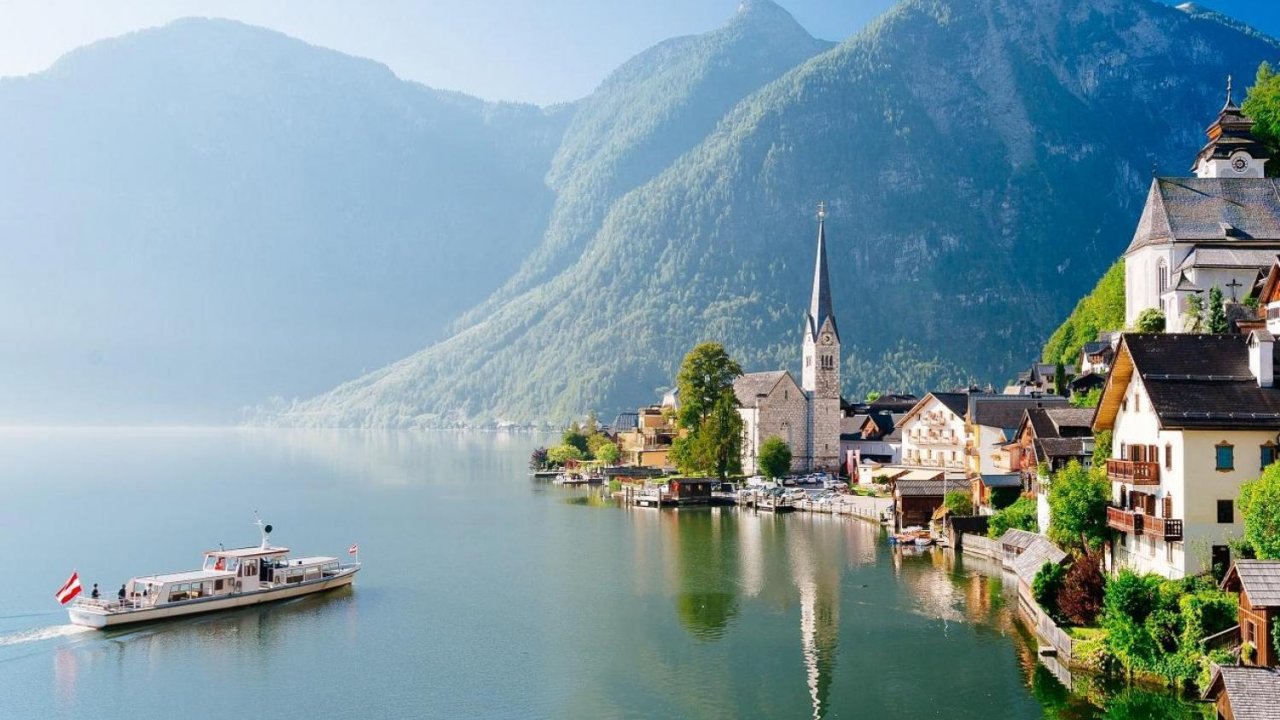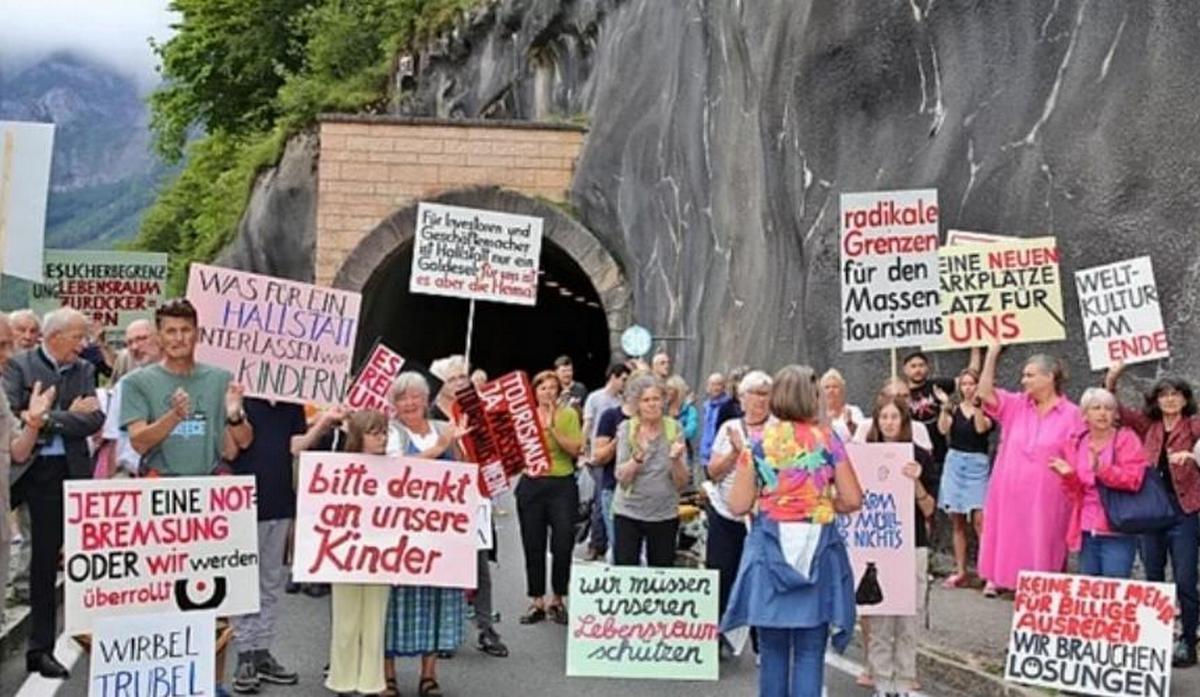Another small but very popular town in Europe has rebelled against the influx of vacationers. Residents went on a protest because they were very tired of visitors. It is about the Austrian Hallstatt, which was famous for seclusion and silence until the South Korean drama was filmed there.
Hallstatt, a small town in the Alps, located on the shore of the lake of the same name, has a little less than 1,000 inhabitants but turns into a place of pilgrimage for tens of thousands of tourists every summer. The town, surrounded by mountains, is known for its beautiful lake views and old houses. But at the height of the tourist season, the population increases many times over. Before the Covid-19 pandemic, Hallstatt was visited by about a million tourists a year. It’s not just Koreans. Hallstatt is also popular with the Chinese. 11 years ago in China, they even built an exact copy of the town, with all its houses and monuments. But this turned out to be not enough to reduce the flow of people willing to visit the real city.

Although Hallstatt’s economy thrives on tourism revenue, residents feel uneasy, claiming that their lives have worsened with the development of tourism. Residents of the alpine town, who want to limit the daily flow of tourists, claim that on some dates in Hallstatt, there is nowhere for locals to even walk.
Where does this interest come from?
This explosion of travelers’ interest in the Austrian region began after the filming of a popular Korean TV series in 2006. We are talking about the “Spring Waltz”, which has become incredibly popular both in South Korea and abroad. After the wave of fame for the gifts, Korean tourists started arriving in Hallstatt to see the scenery of the region.
Recently, residents installed temporary walls in places where tourists often took selfies, but were met with negative reactions. Now the local authorities are considering the introduction of restrictions on visits to preserve the peace and quiet of Austrians.

